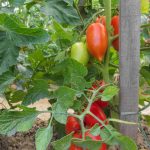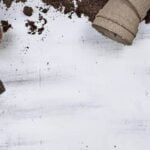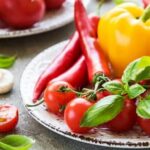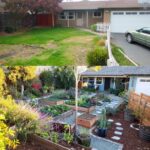When it comes to vegetable gardening, the seeds you choose play a vital role in the success of your harvest. Whether you are a seasoned gardener or just starting out, understanding the significance of vegetable gardening seeds is crucial for a thriving garden. From selecting the right seeds to understanding the germination process, every step in cultivating your vegetables starts with these tiny powerhouses.
The quality of vegetable seeds can significantly impact the growth and productivity of your garden. Factors such as seed variety, origin, and compatibility with your local climate can all influence the outcome of your harvest. By carefully choosing the right vegetable gardening seeds, you set yourself up for a bountiful and successful growing season.
In this article, we will explore everything you need to know about vegetable gardening seeds, from differentiating between heirloom, hybrid, and GMO seeds to tips for starting seeds indoors and direct sowing in your garden. Whether you are a beginner looking to embark on your first gardening journey or a seasoned pro seeking to enhance your skills, understanding the importance of vegetable seeds is key to cultivating a thriving garden full of fresh produce.
Choosing the Right Vegetable Seeds
When it comes to vegetable gardening seeds, choosing the right ones is crucial for a successful harvest. There are several factors to consider when selecting seeds for your garden to ensure that you have healthy plants and bountiful crops. Here are some key factors to keep in mind:
- Variety: One of the first things to consider when choosing vegetable seeds is the variety or type of plant you want to grow. Think about what vegetables you enjoy eating and what will thrive in your specific growing conditions.
- Climate: Different vegetable plants require different climate conditions to grow successfully. Consider the climate in your area and choose seeds that are suitable for your region’s temperature and weather patterns.
- Growing Season: Some vegetables have longer growing seasons than others, so it’s important to choose seeds that align with your region’s growing season. Make sure to check the seed packets for information on when to plant and how long it will take for each vegetable to mature.
In addition, it’s important to consider whether you want heirloom, hybrid, or GMO vegetable seeds for your garden. Heirloom seeds are open-pollinated varieties that have been passed down through generations and often offer unique flavors and characteristics.
Hybrid seeds are created by crossing two different varieties of plants to produce desired traits like disease resistance or higher yields. GMO (genetically modified organism) seeds have been genetically altered in a laboratory setting for specific traits like pest resistance or longer shelf life.
Ultimately, the key is to choose vegetable gardening seeds that suit your preferences, growing conditions, and gardening goals. By taking these factors into consideration, you can set yourself up for a successful and rewarding garden experience.
Types of Vegetable Seeds
When it comes to choosing vegetable gardening seeds, it’s essential to understand the different types available in the market. The three main categories of vegetable seeds are heirloom, hybrid, and genetically modified organism (GMO) seeds. Each type has its own characteristics and considerations that gardeners should assess before making a selection.
Heirloom seeds are open-pollinated varieties that have been passed down from generation to generation. These seeds come from plants that were grown and saved because of their desirable traits, such as taste, color, or adaptability to specific climate conditions. Heirloom vegetables often have unique shapes, flavors, and colors that add diversity to your garden and plate. Additionally, saving seeds from heirloom plants allows gardeners to preserve rare and traditional varieties for future generations.
Hybrid seeds are created by cross-breeding two different plant varieties with desirable traits to produce offspring with specific characteristics. While hybrid plants can offer benefits such as disease resistance or increased yield, the downside is that saved seeds will not reliably produce the same traits in subsequent generations. Gardeners who choose hybrid seeds should be aware that they may need to repurchase seeds annually for consistent results.
On the other hand, GMO seeds are genetically engineered to express certain traits like pest resistance or herbicide tolerance. However, GMOs remain a controversial topic in agriculture due to concerns about environmental impacts and potential health risks.
When deciding which type of vegetable gardening seeds to use in your garden, it’s important to consider your goals and priorities as a gardener. Whether you value preserving heritage varieties with heirloom seeds or prioritize performance and uniformity with hybrids, understanding the distinctions between these types of seeds will help you make an informed choice for your vegetable garden.
Starting Seeds Indoors
Choosing the Right Containers
When starting seeds indoors, it’s important to use the right containers. You can use seed trays, peat pots, or recycled containers like yogurt cups or egg cartons. Make sure the containers have drainage holes to prevent waterlogging and promote healthy root growth. Additionally, using individual cells or pots for each seedling will make it easier to transplant them into the garden later on.
Providing Adequate Light
One of the most common mistakes when starting seeds indoors is not providing enough light. Seedlings need ample light to grow strong and healthy. Place your seed trays near a south-facing window where they can receive at least 6-8 hours of sunlight per day. If natural light is insufficient, consider using grow lights to supplement light levels.
Proper Watering and Temperature
Overwatering or underwatering can spell disaster for your seedlings. Keep the soil consistently moist but not waterlogged, as too much water can lead to damping off disease. It’s also essential to maintain consistent temperatures around 70-75°F for optimal germination. Consider using a heating mat if your indoor space is too cold for seed starting.
By following these tips and techniques for starting your vegetable gardening seeds indoors, you’ll set yourself up for success and ensure strong, healthy plants for transplanting outdoors once the last frost has passed. Remember that each plant may have different requirements, so pay attention to individual varieties when starting seeds indoors.
Direct Sowing Seeds
One important factor to keep in mind when direct sowing seeds is the timing. Different vegetables have specific planting times based on your local climate and growing season. It’s crucial to consult a planting calendar or guide specific to your region to determine the best time to sow each type of seed. Planting too early or too late can impact the success of your vegetable garden.
Another essential step in direct sowing seeds is preparing the soil properly. Make sure the soil is well-draining, loose, and free of weeds before planting your seeds. You can improve soil quality by adding compost or organic matter to provide essential nutrients for seed germination and plant growth. Proper soil preparation sets the foundation for healthy root development and robust plants throughout the growing season.
| Vegetable Seeds | Planting Time |
|---|---|
| Tomatoes | After last frost date |
| Zucchini | When soil temperature reaches 60°F (15°C) |
| Lettuce | Cool season crop: Early spring or fall planting |
Seed Germination
Moisture plays a vital role in seed germination as it activates enzymes that break down stored nutrients within the seed, allowing the embryo to grow and develop into a seedling. For most vegetable seeds, maintaining consistent moisture levels is essential to kickstart the germination process.
However, it is crucial not to oversaturate the soil, as this can lead to rotting of the seeds before they have a chance to sprout. Finding the right balance when watering your seeds is key to ensuring successful germination.
Temperature also plays a critical role in seed germination, as different vegetable seeds have specific temperature requirements for optimal sprouting. Some seeds require warm soil temperatures to break dormancy and start growing, while others prefer cooler conditions.
It’s important to research the ideal temperature range for the vegetable seeds you are planting and provide them with a suitable environment for germination. Additionally, providing adequate oxygen through well-draining soil and proper ventilation can facilitate the respiration process during germination, promoting healthy seedling development.
| Key Factors for Seed Germination | Importance |
|---|---|
| Moisture | Activates enzymes for nutrient breakdown |
| Temperature | Specific requirements for different seeds |
| Oxygen | Facilitates respiration for healthy growth |
Seed Saving
Benefits of Seed Saving
One of the key benefits of seed saving is cost-effectiveness. By saving seeds from your own plants, you eliminate the need to purchase new seeds every season, ultimately saving money in the long run. Additionally, saved seeds are well-adapted to your specific growing conditions, resulting in healthier and more resilient plants that are better equipped to thrive in your garden.
Another advantage of seed saving is the preservation of heirloom and rare varieties. Many commercially available vegetable gardening seeds are hybrid or genetically modified, which may lack the unique flavors and characteristics found in heirloom varieties. By saving seeds from heirloom plants, you help preserve these traditional varieties that may otherwise be at risk of extinction.
Tips for Successful Seed Saving
To successfully save seeds from your harvest, it’s important to follow proper techniques for each type of vegetable plant. Some vegetables, such as tomatoes and peppers, require fermentation to remove the gelatinous coating surrounding the seeds. Others, like beans and peas, can simply be allowed to dry on the plant before harvesting. Be sure to research the specific requirements for each type of vegetable seed you plan to save.
Furthermore, it’s essential to properly store saved seeds to maintain their viability. Store seeds in a cool, dry place away from direct sunlight and moisture. Consider investing in seed-saving envelopes or containers labeled with the name of the variety and date harvested for easy identification. With proper care and storage, saved vegetable gardening seeds can remain viable for several years, allowing you to continue growing your favorite varieties season after season.
Top Vegetable Seeds for Beginners
Starting a vegetable garden from seeds can be a rewarding experience, especially for beginners looking to try their hand at gardening. When selecting vegetable gardening seeds, it is essential to consider the ease of growing and the success rate for novice gardeners. Here is a curated list of some of the top vegetable seeds that are easy to grow and perfect for those new to gardening.
One popular choice for beginners is the classic tomato plant. Tomatoes are versatile, can be grown in pots or in the ground, and are relatively low maintenance. With a variety of sizes, colors, and flavors available, tomatoes are a great starting point for any novice gardener. Another easy-to-grow vegetable seed is zucchini. Zucchini plants are fast-growing, produce plenty of fruit, and are generally resistant to common pests and diseases.
For those looking to add some greens to their garden, lettuce is an excellent option. Lettuce grows quickly, can be harvested multiple times throughout the season, and does well in both containers and garden beds. Additionally, radishes are another beginner-friendly vegetable seed to consider. Radishes have a short growing period, making them perfect for impatient gardeners, and they do not require much attention once planted.
Overall, these top vegetable seeds for beginners provide an excellent starting point for anyone looking to dip their toes into vegetable gardening. With proper care and attention, novice gardeners can enjoy a bountiful harvest from these easy-to-grow vegetables that will help build confidence and skills in gardening. Happy planting.
Troubleshooting Seed Issues
When it comes to vegetable gardening seeds, there are a few common issues that may arise during the growing process. It’s important for gardeners to be aware of these problems and know how to address them effectively. Here are some of the most frequent seed issues and tips on troubleshooting them:
1. Poor Germination: One of the most frustrating issues gardeners may encounter is poor germination rates.
This can be caused by various factors such as old or low-quality seeds, incorrect planting depth, inadequate moisture levels, or inconsistent temperatures. To improve germination rates, make sure to use fresh and high-quality seeds, follow the recommended planting depth specified on the seed packet, keep the soil consistently moist (but not waterlogged), and provide a stable temperature in your growing environment.
2. Damping Off: Damping off is a common fungal disease that affects seedlings, causing them to wilt and eventually die. This disease thrives in overly moist conditions and can quickly spread among young plants. To prevent damping off, ensure good air circulation around your seedlings, use sterile soil mixtures for starting seeds indoors, avoid overwatering, and practice proper sanitation by cleaning trays and containers regularly.
3. Pests: Another issue that gardeners may face when growing vegetable seeds is pest infestations. Common pests such as aphids, caterpillars, or spider mites can damage seedlings and impact plant growth if left untreated. To combat pests organically, consider using natural predators like ladybugs or lacewings, handpick larger insects like caterpillars, apply neem oil or insecticidal soap as a deterrent, or create physical barriers like row covers to protect your plants from pests.
By being proactive in identifying and addressing potential seed issues in your vegetable garden, you can increase your chances of a successful harvest. Remember that patience and diligence are key when troubleshooting any problems with your vegetable gardening seeds. Keep an eye on your plants regularly, make adjustments as needed, and don’t hesitate to seek advice from experienced gardeners if you encounter persistent challenges in your gardening journey.
Conclusion
In conclusion, vegetable gardening seeds play a crucial role in the success of any garden. From selecting the right seeds to starting them indoors and directly sowing them in the garden, each step is essential for a bountiful harvest. Understanding the differences between heirloom, hybrid, and GMO seeds can help gardeners make informed decisions when choosing what to plant.
Furthermore, the process of seed germination is fascinating and requires proper care to ensure successful sprouting. Saving seeds from your harvest not only saves money but also allows you to maintain a sustainable cycle of planting year after year. For beginners, starting with easy-to-grow vegetable seeds can boost confidence and provide a rewarding gardening experience.
As you embark on your vegetable gardening journey, remember that troubleshooting seed issues is part of the learning process. By addressing common problems such as poor germination or pest damage promptly, you can prevent setbacks and enjoy a flourishing garden. So why wait? Get your hands dirty, sow those vegetable gardening seeds, and watch as your garden blooms with fresh produce that you can proudly call your own. Happy gardening.
Frequently Asked Questions
What Is the Easiest Vegetable to Grow From Seed?
The easiest vegetable to grow from seed is probably lettuce. Lettuce seeds are small, easy to handle, and germinate quickly. Plus, lettuce doesn’t require a lot of maintenance or special care compared to other vegetables.
When Should I Start Planting Vegetable Seeds?
When planting vegetable seeds, the timing varies depending on the specific vegetable and your climate zone. However, a general rule of thumb is to start planting seeds indoors several weeks before the last frost date in spring. This allows seedlings to mature and be ready for transplanting into the garden when temperatures are warmer.
Is It Better to Buy Vegetable Plants or Seeds?
Whether it’s better to buy vegetable plants or seeds depends on various factors such as convenience, variety, cost, and gardening experience. Buying plants can be more convenient for beginners or those with limited time since they eliminate the need for starting seeds indoors. On the other hand, growing from seeds offers a wider selection of varieties not typically available as plants at nurseries.
Additionally, seeds are usually more cost-effective than purchasing individual plants. Ultimately, the decision between buying plants or seeds comes down to personal preference and gardening goals.

If you’re looking to get into vegetable gardening, or are just looking for some tips on how to make your current garden better, then you’ve come to the right place! My name is Ethel and I have been gardening for years. In this blog, I’m going to share with you some of my best tips on how to create a successful vegetable garden.





